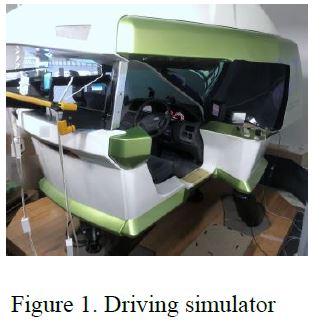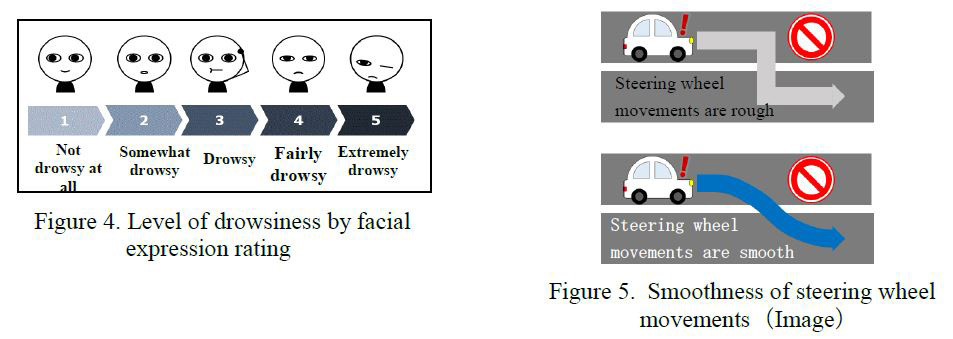Sharp Corporation conducted collaborative research on its Plasmacluster technology, with Dr. Toshio Ito, a project researcher specializing in driving assistance research at Shibaura Institute of Technology, SIT Research Laboratories and a representative director at Hyper Digital Twins Co., Ltd*2. When the effectiveness on driving ability is validated by using a driving simulator, Sharp confirmed for the first time in the world, the improvement of driving ability by exposing to Plasmacluster ions.
In 2020, the research by Sharp using brain wave measurement has demonstrated effectiveness of Plasmacluster technology in maintaining the concentration of people while driving*3. Sharp considered that it can be also effective to the improvement of driving behavior (awareness, judgment, and vehicle operation). Therefore, this time, Sharp conducted a research into manual driving and self-driving *4, which are anticipated to enter into wider use in the future, using a driving simulator. As a result, Sharp confirmed a reduction in the reaction time to step on the brakes and an improvement in steering wheel operability during manual driving, as well as drowsiness suppression and an improvement in steering wheel operability after takeover*5 from automated systems during self-driving. The study is the first of its kind to find that Plasmacluster technology affects specific behavior by drivers.
In manual driving, careless driving (idle driving) ranks first in the number of fatal accidents by violation of laws and regulations*6, and under self-driving, there are concerns about accidents caused by driving behavior errors such as delayed reactions when a driver suddenly needs to intervene manually. Given that it will take time to fully automate vehicle operation, the results of this research that may prevent careless driving are considered to be of very significant.
Plasmacluster technology is an air purification technology that uses the same positive and negative ions as those present in nature. A high level of safety and various effectiveness have been confirmed by conducting tests at independent third-party testing institutions in and outside Japan for more than 20 years. This time, Sharp has newly demonstrated the effectiveness of Plasmacluster technology on improving driving ability, and Sharp will continuously conduct the verification of the effectiveness and its mechanism against the human being to enhance its reliability, and will study the additional effectiveness and applicability of Plasmacluster technology to the new field.
Comments from Dr. Toshio Ito, project researcher, Shibaura Institute of Technology, SIT Research Laboratories
In our manual driving tests, according to the results of this reaction time measurement, it was confirmed that the brake could be stepped on about 0.5 seconds earlier than usual after detecting abnormality by exposing Plasmacluster ions. As a result, if you are driving at 50 kilometers per hour, you can stop about 7 meters sooner. With the current level of self-driving—Level 2, meaning that the driver retains the central role in vehicle operation while being aided by partial self-driving—it may switch to manual control by a driver in the event the self-driving system is unable to deal with a situation. Since driver’s attention is prone to be reduced when self-driving systems are engaged, Plasmacluster technology, which reduces drowsiness and improves the driver’s steering wheel operability, has the potential to prevent accidents in situations where the driver needs to quickly resume manual control. I look forward to seeing further applications of Plasmacluster technology.
*1 For an ion-discharge air purification technology (as of September 26, 2023, based on Sharp findings).
*2 Startup company from Shibaura Institute of Technology. Develop ultra-compact mobility business by fusion sensor network technology and robotics technology.
*3 “Demonstration of Stress Reduction and Maintenance of Concentration While Driving a Car” (2020), https://jp.sharp/plasmacluster-tech/closeup/closeup05/ .
*4 This study focused on a level of self-driving in which the driver is principally responsible for operating the vehicle.
*5 A situation in which the driver must resume manual driving because the self-driving system is unable to control the vehicle properly.
*6 From “Trend in Fatal Traffic Accidents by Driver (First-party) Violation for Scooters and Larger Vehicles, 2022” (National Police Agency).
●Plasmacluster and the Plasmacluster logos are registered trademarks of Sharp Corporation.
■ Overview of the study demonstrating how Plasmacluster ions improve driving ability
• Test conducted by: Dr. Toshio Ito (project researcher, Shibaura Institute of Technology, SIT Research Laboratories)
• Test space: Laboratory, Shibaura Institute of Technology
• Participants: 20 men and women ages 20 to 24
• Verification test apparatus: Test equipment with Plasmacluster technology and driving simulator

• Test conditions:
a) Without Plasmacluster ions (air flow only)
b) With Plasmacluster ions
• Plasmacluster Ion density: Participant location: Approx. 100,000 ions/cm3
• Test method:
•Participants navigated a driving course modeling an expressway both in manual driving and in self-driving* mode.
* During the self-driving part of the study, participants left their hands on the steering wheel and switched to manual driving when an obstruction appeared in front of the vehicle.

1. During manual driving:
The following parameters were evaluated based on the assumption that maintenance of concentration would affect brake and steering wheel operation by allowing faster recognition of hazards appearing in front of the vehicle: (Test time of 40 min. each)
(1)Reaction time until brake application (evaluating the time from braking indication by the leading vehicle to braking by the participant)
(2)Smoothness of steering wheel movements** (evaluating the smoothness with which the participant operated the steering wheel when avoiding obstacles)
2. During self-driving:
The following parameters were evaluated based on concerns that self-driving leads to reduced attention, increased drowsiness, and delayed reactions when switching to manual driving: (Evaluation of (4) after (3) with a test time of 20 min.)
(3)Evaluation of drowsiness by facial expression rating (Evaluation of facial expressions using 5 levels of drowsiness: See Figure 4)
(4)Smoothness of steering wheel movements after takeover** (similar to (2))
** Smoothness of steering wheel movements during manual driving: Evaluated using the steering entropy method(Method of analyzing randomness) due to the long time period that was analyzed.
Smoothness of steering wheel movements during self-driving: Evaluated using steering angle differential variance values(Variability value of handle angle) due to the short time period that was analyzed.

●Results:
1. Manual driving evaluation results:

Compared to air flow only, use of Plasmacluster ions found the following:
(1)The time from braking indication by the leading vehicle to braking by the participant was shorter (Figure 6).
(2)Participants were able to smoothly avoid obstacles (Figure 7).
2. Self-driving evaluation results:

Compared to air flow only, use of Plasmacluster ions found the following:
(3)Reduced drowsiness level (Figure 8)
(4)Participants were able to avoid obstacles with smoother steering wheel movements after takeover (Figure 9).
From the above results, we confirmed that Plasmacluster technology has effect to improve driving ability.
■ Overview of self-driving level definitions*
|
Driving responsibility |
Level |
Definitions |
Automatic |
Monitoring of |
failure response |
Ride of driver |
|
Human |
0 |
No automation |
× Driver can perform |
× Driver can |
× Driver can |
YES The ride of the |
|
1 |
Driving |
△ System can perform |
× |
× |
YES |
|
|
2 |
Partial |
〇 System can perform |
× |
× |
YES |
|
|
System |
3 |
Automation |
〇 |
〇 Monitoring of |
× |
YES |
|
4 |
Advanced |
〇 |
〇 |
〇 System can also |
YES |
|
|
5 |
Full |
〇 |
〇 |
〇 |
NO The ride of the |
* Compiled based on “Public-Private ITS Initiative/Roadmaps (June 15, 2021)” (Prime Minister’s Office of Japan).
Research Institutes That Provided Data for Sharp’s Academic Marketing
|
Target |
Testing and Verification Organization |
|
Efficacy proven in clinical trials |
Shibaura Institute of Technology, College of Systems Engineering and Science, Department of Machinery and Control Systems |
|
Kyushu Sangyo University, Department of Sport Science and Health, Faculty of Human Sciences | |
|
National Institute of Fitness and Sports in Kanoya | |
|
Littlesoftware Inc. | |
|
Dentsu ScienceJam Inc. | |
|
Graduate School of Medicine, University of Tokyo / Public Health Research Foundation | |
|
Faculty of Science and Engineering, Chuo University / Clinical Research Support Center, University Hospital, University of Tokyo | |
|
National Center of Tuberculosis and Lung Diseases, Georgia | |
|
Animal Clinical Research Foundation | |
|
Soiken Inc. | |
|
School of Bioscience and Biotechnology, Tokyo University of Technology | |
|
National Trust Co., Ltd. / HARG Treatment Center | |
|
Working mechanism of its enhancing effect on work performance |
Kyushu Sangyo University, Department of Sport Science and Health, Faculty of Human Sciences |
|
Working mechanism of inhibitory effects on viruses, fungi, and bacteria |
Professor Gerhard Artmann, Aachen University of Applied Sciences, Germany |
|
Working mechanism of inhibitory effects on allergens |
Graduate School of Advanced Sciences of Matter, Hiroshima University |
|
Working mechanism of skin moisturizing (water molecule coating) effect |
Research Institute of Electrical Communication, Tohoku University |
|
Viruses |
Kitasato Research Center of Environmental Sciences |
|
Seoul National University | |
|
Shanghai Municipal Center for Disease Control and Prevention, China | |
|
Kitasato Institute Medical Center Hospital | |
|
Retroscreen Virology, Ltd., UK | |
|
Shokukanken Inc. | |
|
University of Indonesia | |
|
Hanoi College of Technology, Vietnam National University, Vietnam | |
|
Institut Pasteur, Ho Chi Minh City, Vietnam | |
|
National Research Center for the Control and Prevention of Infectious Diseases, Institute of Tropical Medicine, Nagasaki University | |
|
Department of Microbiology, Shimane University, Faculty of Medicine | |
|
Columbia University, Department of Medicine | |
|
Fungi |
Ishikawa Health Service Association |
|
University of Lübeck, Germany | |
|
Professor Gerhard Artmann, Aachen University of Applied Sciences, Germany | |
|
Japan Food Research Laboratories | |
|
Shokukanken Inc. | |
|
Shanghai Municipal Center for Disease Control and Prevention, China | |
|
Biostir Inc. | |
|
Medical Mycology Research Center, Chiba University | |
|
Bacteria |
Ishikawa Health Service Association |
|
Shanghai Municipal Center for Disease Control and Prevention, China | |
|
Kitasato Research Center of Environmental Sciences | |
|
Kitasato Institute Medical Center Hospital | |
|
Dr. Melvin W. First, Professor Emeritus, Harvard School of Public Health, US | |
|
Animal Clinical Research Foundation | |
|
University of Lübeck, Germany | |
|
Professor Gerhard Artmann, Aachen University of Applied Sciences, Germany | |
|
Japan Food Research Laboratories | |
|
Shokukanken Inc. | |
|
Chest Disease Institute, Thailand | |
|
Biostir Inc. | |
|
Allergens |
Graduate School of Advanced Sciences of Matter, Hiroshima University |
|
Department of Biochemistry and Molecular Pathology, Graduate School of Medicine, Osaka City University | |
|
Safety |
LSI Medience Corporation |
|
Evaluation of effects on cells |
Columbia University, Department of Medicine |
|
Odors, pet smells |
Boken Quality Evaluation Institute |
|
Animal Clinical Research Foundation | |
|
Skin beautifying effects |
School of Bioscience and Biotechnology, Tokyo University of Technology |
|
Hair beautifying effects |
Saticine Medical Co., Ltd. |
|
C.T.C Japan Ltd. | |
|
Plant |
Facility of Agriculture, Shizuoka University |
|
Hazardous chemical substances |
Sumika Chemical Analysis Service Ltd. |
|
Indian Institutes of Technology Delhi |


 Choose
Choose


